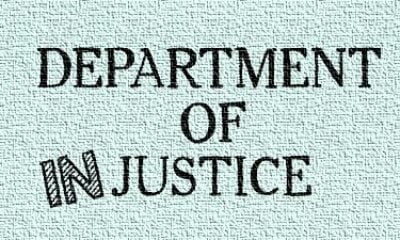

The bankruptcy of Silicon Valley Bank has brought the average person’s attention to the old term, “a run on the bank,” but what exactly does that mean and what have been the biggest runs in our lifetime?
A bank run is a phenomenon in which a large number of depositors withdraw their funds from a bank at the same time, typically due to concerns about the bank’s solvency. This can lead to a liquidity crisis for the bank, which can ultimately result in its failure. In the United States, there have been several notable bank runs since 1950, each with their unique causes and consequences. In this article, we will examine some of the most significant bank runs in American history and explore the potential dangers the US faces for future bank runs.
What exactly happens in a bank run?
During a bank run, depositors line up at the bank to withdraw their funds. As more and more depositors withdraw their funds, the bank’s reserves become depleted, and it becomes increasingly difficult for the bank to meet the demand for withdrawals. This can lead to a vicious cycle in which the bank’s financial difficulties are exacerbated by the run, leading to even more depositors attempting to withdraw their funds.
In some cases, the bank may be able to satisfy the demand for withdrawals by using its own reserves, borrowing from other banks, or selling assets. However, if the bank is unable to meet the demand for withdrawals, it may be forced to declare bankruptcy or be taken over by regulators. This can result in losses for depositors, as they may only be able to recover a portion of their funds from the FDIC, which insures deposits up to a certain amount.
The collapse of a bank can have wide-ranging consequences for the economy. Foremost, it can lead to a loss of confidence in the banking system as a whole, as depositors begin to question the safety of their funds. This can lead to other banks experiencing runs, potentially causing a wider financial crisis.
The major bank runs since 1984
Continental Illinois National Bank and Trust Company (1984)
The Continental Illinois National Bank and Trust Company was the seventh-largest bank in the United States when it experienced a bank run in 1984. The bank was heavily invested in the energy sector, which suffered from falling oil prices and rising interest rates. As a result, the bank experienced a significant increase in loan losses and was unable to meet its depositors’ demands for withdrawals.
The US government stepped in to prevent a complete collapse of the bank, providing a $4.5 billion bailout and taking control of the bank’s operations. This marked the first time that the US government had intervened to save a failing bank since the Great Depression.
Bank of United States (1991)
The Bank of United States was a New York City-based bank that was founded in 1913. The bank’s primary customers were immigrants and small business owners, and it was known for its high-interest rates and aggressive marketing tactics.
In the late 1980s, the bank’s management began to make increasingly risky loans to real estate developers, many of which defaulted. This led to a decline in the bank’s assets and a loss of confidence among its depositors.
On December 11, 1990, the bank was closed by the Federal Deposit Insurance Corporation (FDIC), and depositors were only able to recover a portion of their funds. The bank’s failure was one of the largest in US history at the time, with losses estimated at $2.5 billion.
IndyMac Bank (2008)
IndyMac Bank was a California-based bank that specialized in subprime mortgages. The bank’s aggressive lending practices and lax underwriting standards led to a high number of defaults, and the bank was eventually seized by the FDIC in July 2008.
The bank’s failure was significant, with losses estimated at $10.7 billion. The failure also had wider implications for the US financial system, as it marked the largest bank failure since the Great Depression and contributed to the wider financial crisis that began in 2008.
Washington Mutual (2008)
Washington Mutual was a Seattle-based bank that was one of the largest savings and loan institutions in the United States. The bank had a significant exposure to the subprime mortgage market, and as a result, it experienced significant losses when the housing market collapsed in 2008.
The bank was seized by the FDIC in September 2008, and its assets were sold to JPMorgan Chase. The failure was significant, with losses estimated at $307 billion.
Northern Rock (2007)
Northern Rock was a British bank that experienced a bank run in 2007. The bank had been heavily invested in the US subprime mortgage market and was unable to obtain funding from other banks due to concerns about its solvency.
As news of the bank’s difficulties spread, depositors began to withdraw their funds, leading to a run on the bank. The UK government eventually nationalized the bank to prevent its collapse, and it was later sold to Virgin Money.
The potential dangers the US faces for future bank runs
Despite the significant bank failures of the past, there are several potential dangers that the US faces for future bank runs. First, the US banking system remains highly interconnected, with many large banks holding significant exposure to each other. This means that the failure of one bank could potentially lead to a domino effect, with other banks also experiencing runs as a result.
Second, there is growing concern about the rise of digital currencies and the potential for these currencies to disrupt traditional banking systems. While digital currencies such as Bitcoin and Ethereum have yet to achieve mainstream adoption, there is a risk that they could become more widely used in the future, potentially leading to a loss of confidence in traditional banking systems.
Third, the US banking system remains highly leveraged, with many banks holding large amounts of debt relative to their equity. This means that even small losses can have a significant impact on a bank’s balance sheet, potentially leading to a loss of confidence among depositors.
While the US banking system has weathered several significant bank runs in the past, it remains vulnerable to future crises, including this latest run. To prevent future bank runs, policymakers will need to address some of the underlying vulnerabilities in the banking system, such as high levels of leverage and interconnectedness. Additionally, regulators will need to closely monitor emerging risks, such as the rise of digital currencies and the impact of climate change on the banking system. Only by taking these steps can we hope to prevent future bank runs and maintain stability in the US financial system.
We'd love to hear your thoughts about this article. Please take a minute to share them in the comment section by clicking here. Or carry the conversation over on your favorite social network by clicking one of the share buttons below.
Join the conversation!
We have no tolerance for comments containing violence, racism, profanity, vulgarity, doxing, or discourteous behavior. Thank you for partnering with us to maintain fruitful conversation.
Business
Top Motivational Speaker Predicts Hard Times in 2024
Motivational Speakers Hall of Fame Member Sees Tough Times Ahead
Are you a conservative business person? Then check out the Red Referral Network and partner with Dinesh D’Souza by clicking the banner below:
One of the top 50 speakers in the world and Motivational Speakers Hall of Fame Member, Chris Widener, tells us why he thinks 2024 is going to be a very hard year for Americans. Watch the short video below and let us know what you think in the comments!
The pressure is building on President Joe Biden. He has rightly taken a stand in support of Israel in defending their country and doing what they can to eliminate Hamas from Gaza. Yes, he is straddling the fence a bit, calling on Israel to do whatever it can to limit innocent civilian casualties. But he has positioned our military resources to back up his support for Israel and protection for our forces in the Middle East.
President Biden has warned nations not to open a second front against Israel. He was adamant, “Don’t, don’t, don’t!” To this point, his words may have resulted in restraint, but forces from Lebanon have initiated some missile attack, and our bases in Iraq and Syria have put our own soldiers in harm’s way.
Recent polls indicate that up to 82% of Americans support Israel after seeing the gruesome images of those savaged from the Hamas attacks on October 6th. But those polls are sure to come down as more demonstrations support “Palestinian freedom” and Israel’s ground invasion results in reported civilian casualties.
Already, Iran and NATO ally Turkey have expressed a willingness to consider joining the fight against Israel if the war on Palestine continues. Iran’s foreign minister, Hossein Amir-Abdollahian, has threatened the United States while speaking at the United Nations. “I say frankly to the American statesmen who are now managing the genocide in Palestine. I warn, if the genocide in Gaza continues, they will not be spared from this fire.” Turkey’s President Tayyip Erdogan, an Islamist, spoke at a massive pro-Palestinian rally calling Hamas “freedom fighters” and calling Israel an “occupier.”
To appease their own citizens, many Middle Eastern countries, who have demonized Israel for decades, will need to criticize Israel and show some visible support for the Palestinian cause. Hamas knows that and, using innocent civilians as shields, will give them all the images they need of lost civilian lives to stir even more demonstrations and attacks on US embassies in the area.
Visions of a World War III with nuclear implications are being fueled in the media. Jews are coming under attack around the world in ways not seen since World War II. Stores and synagogues are being vandalized here in America. With growing demonstrations with Israel, will Biden’s support for Israel hold steady?
Because of past decisions Biden has made, the price for his support of Israel will only grow. Having curtailed our own oil drilling and processing and used much of our petroleum reserves to help bring down the cost of gas in America, we must import oil to help meet domestic needs.
In response to the war on Hamas, there will be pressure to cut off Middle Eastern oil to America. The immediate result of such a cutoff would be further increases in the cost of fuel for Americans. That would fuel more inflation and an even bigger economic disaster for America’s middle class. With up to seventy percent of Americans already living paycheck to paycheck, higher fuel costs will just make things worse. Salaries are not keeping up with the ever-growing cost of living for fuel and food. Workers are striking for higher wages, which will only create more inflation.
Middle Eastern oil embargos would seriously impact our economy. If you are old enough, you remember the long lines at gas stations in the 80’s. Fifty years after the 1973 Arab oil embargo crippled the American economy, an expanded war in the Middle East has the potential of again disrupting global oil supplies. In response to the conflict, oil prices are already approaching 90 dollars per barrel.
Yes, Trump has proved that we have the oil to maintain energy independence. Oil drilling and production could be reopened. We have the oil to meet our needs, but it would take time for production to meet our demand.
An expanded war in the Middle East could certainly impact more than our economy and the cost of living. President Biden’s open border policy has resulted in any number of terrorists crossing our border and moving freely throughout the United States. With our border resources stretched, far too many have entered our country without proper vetting or controls.
It didn’t take many motivated terrorists to attack the US on 9/11. If terrorists are unleashed on multiple American cities, the cost could be enormous. If so, there will be only one person to blame—President Joe Biden. In an attempt to bring in hordes of appreciative future voters and cheap labor for big business, the Democrats have opened America to any number of devastating terrorist attacks.
May President Biden prove your doubters wrong. Close the border now! Stop normalizing relations with Iran. Freeze the 6 billion dollars being held in Qatar for Iran’s “humanitarian use.” Reinstitute sanctions until Iran stops support for Hamas and Hezbollah and affirms the right of Israel to exist.
Finally, continue to have Israel’s back. If their enemies open other fronts and attack our soldiers in the area, use our forces offshore to neutralize those foolish enough to attack our allies and our forces. Such a strong stand will cost you with the extreme left in your own party but stay the course. The world needs a strong America, and it’s your job to prove that continues to be true.













